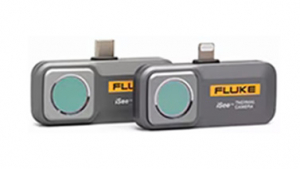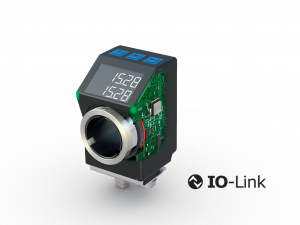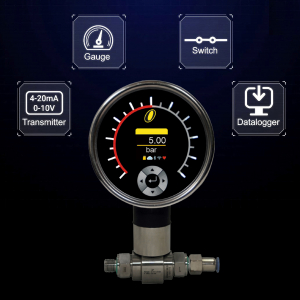Monitoring and controlling brakes crucial part of safety

KOLLMORGEN’s Product Manager for Safety Technology, Karl Pickan talks us through the safety technology at the company. Safety of people and machinery is a constant challenge, particularly with applications that involve loads transported and positioned vertically. There are challenging issues that arise from the design to the construction stages especially when the goal involves ensuring the safety of vertical axes with high loads using just the holding brake installed in the drive motor.
The traditional solution for safe brake control turns out to be problematic on account of new safety standards, as the motor brake needs to be tested periodically in order to ensure that it is functioning properly. This is accompanied by the fact that embedding the test function into the standard controls conflicts with the requirements under safety standard ISO 13849-1.
What options are available? KOLLMORGEN´s solution is based on drive-based safety technology - specifically in the form of the ‘Safe Brake Control’ safety function with integrated brake test.
The new AKD2G generation of servo drives from KOLLMORGEN is a good example of how to achieve additional benefits in machinery and system construction with increased safety. The product which is ready to launch in the market will provide important safety functions on the controller side with Safe Brake Control (SBC) and Safe Brake Test (SBT).
The innovative feature of implementing safety functions with the holding brake integrated into the drive motor applies especially to areas where redundant dual-channel safety brakes are too complicated or too expensive. These areas of application will also become more and more frequent, not least as a result of collaborative production. Customers are increasingly moving towards plant automation, whether for setup operations, assembly or maintenance. These types of activities with a close relation between man and machine are only possible if the relevant cooperation is a safe one.
Safe brake monitoring
What inferences can be drawn from this for vertical loads? The general principle is that the holding brake installed in the drive motor must be designed in such a way that it is able to hold the load acting vertically on an axis. There are two effects that follow from this in terms of implementation: adequate sizing for the holding brake with a torque surplus of 30 percent to the maximum load and secure identification of faults or errors which result in the braking torque ascertained not being achieved. In the second case the individual could no longer be guaranteed protection, as the risk increases that loads may slip through. With »Safe Brake Test», KOLLMORGEN is launching an effective safety function for the servo drives in the S700 series and the AKD2G series to be launched in market in 2017, so that any faults or errors can be safely identified.
The ‘Safe Brake Test’ (SBT) safety function is responsible for carrying out regular tests on the spring-applied brakes installed in the servomotors of KOLLMORGEN´s AKM servo motors and AKM2G ranges.
The required braking torque derived from the application is reviewed automatically by the safety technology in the drive controller at regular intervals, thereby ensuring safe functionality.
There can be multiple root causes for losses of the nominal braking torque of a spring-applied brake. Typical ones involve glazed or worn friction pads, oil residues, as well as broken springs. The spring-applied brake can no longer achieve its full braking torque if springs break as a result of material fatigue. As it can be assumed that not all brakes will break at the same time, the decrease in the braking torque will occur gradually - a process that can be monitored using SBT. These tests will be carried out at least once per shift depending on the risk assessment for an application.
Test routines from the drive Since torques need to be applied for the SBT, integrating this Safety Test function into the drive controller is the only option, as the controllers have to produce this torque. Similar test functions carried out previously by system PLCs are problematic under current standards. ISO 13849 is particularly relevant here. This stipulates that the parameters for the brake test must be configured safely. However, as an external Safety PLC is unable to apply torque, integration of the SBT into the KOLLMORGEN servo drives is a suitable option with the aim of reaching performance levels in conjunction with the Safe Brake Control (SBC).
Since torques need to be applied for the SBT, integrating this Safety Test function into the drive controller is the only option, as the controllers have to produce this torque. Similar test functions carried out previously by system PLCs are problematic under current standards. ISO 13849 is particularly relevant here. This stipulates that the parameters for the brake test must be configured safely. However, as an external Safety PLC is unable to apply torque, integration of the SBT into the KOLLMORGEN servo drives is a suitable option with the aim of reaching performance levels in conjunction with the Safe Brake Control (SBC).
Slim design for safety technology
KOLLMORGEN is bringing a further safety function to the drive level during ongoing operation with Safe Brake Control. This can be conveniently configured via the KOLLMORGEN Workbench graphic user interface - without requiring any additional application software for the safety technology.
Since safe motion guidance also logically requires secure communication, the new AKD2G range of devices uses the safety protocol for Ethercat FSoE. As a result the communication for the safety technology is incorporated into the machine´s existing real-time communication. This means that no additional wiring is required together with I/O modules in order to control the Safe Motion functions. The advantages: space savings of around 15% in the control cabinet with costs for the safety technology reduced by up to 20% at the same time. Availability also increases as some components and cables are known to improve overall system reliability.
Downloads
Similar articles
More from KOLLMORGEN Europe GmbH
- New servo drive and motor package increases performance 23rd July 2020
- Second generation of safety 14th October 2019
- Feature-rich online servo sizing tool for machine builders 9th October 2019
- Power-dense servo drive reduces wiring and filtering to save space 28th November 2018












Write a comment
No comments